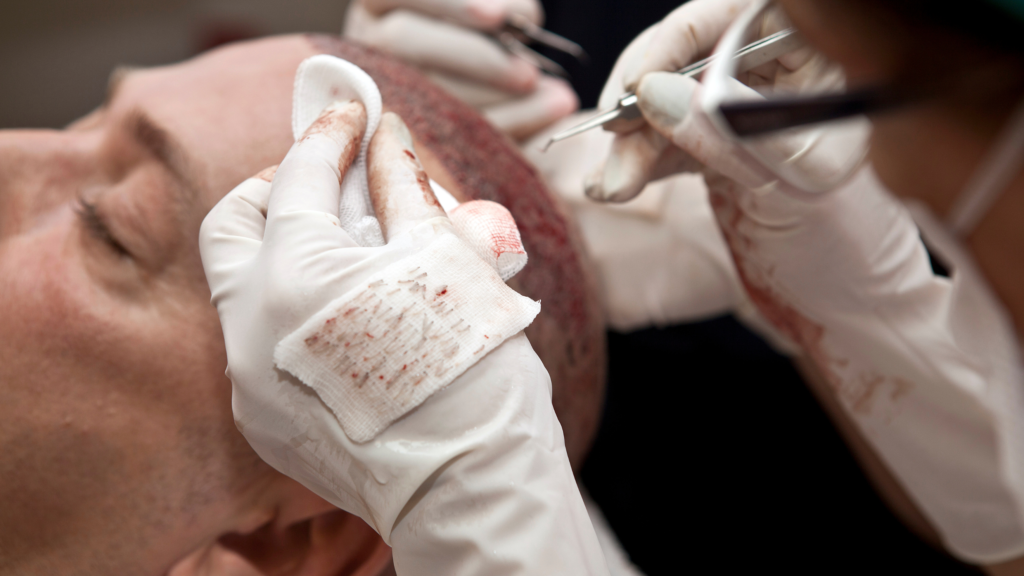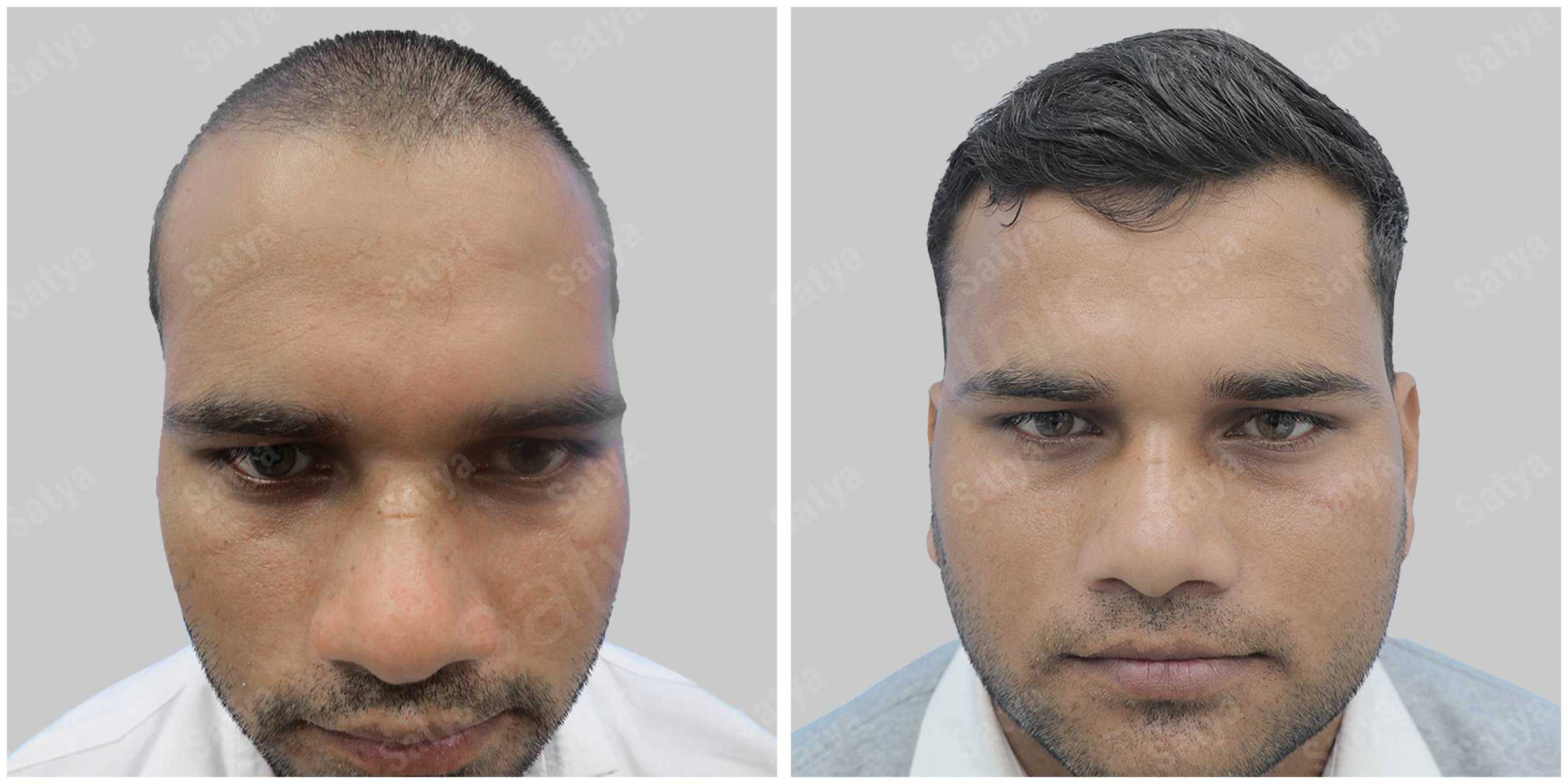The best hair transplant clinic in Gurgaon, hair loss solutions, hair transplant before and after, hair transplant treatment, is hair transplant safe, hair transplant results, baldness treatment, hair transplant for men, hair transplant cost, and hair transplant side effects are every detail related to hair transplants in Gurgaon. It is essential that they choose a suitable hair clinic with a respectable reputation before making their consultation appointment. Selecting whether or not to get a hair transplant requires a thoughtful examination of multiple viewpoints. After assessing the trend of hair loss, the doctor suggests moving forward with a hair restoration procedure. To create the final product, hair is removed from the client’s scalp and implanted in a naturally typical pattern.
1) Follicular Unit Extraction, or FUE, additionally
2) Follic Unit Transplantation, or FUT. The method that is most frequently used is FUE.
1. Who is eligible for a hair transplant?

Approximately 50% of males over 50 experience hair loss these days. Therefore, for males, hair transplantation is the most popular cosmetic process. Males do not naturally experience hair loss. A lot of women also experience hair thinning or loss. In addition to age, traumatic events, and a variety of medical conditions, hair loss can also result from genetic reasons. Regardless of the reason for hair loss, all patients with a sufficient number of hair follicles can benefit from hair transplantation. The brows and other hairy parts of the body, such as the scalp, can also benefit from the transplantation procedure.
2. Which techniques are applied when transplanting hair?
In addition to treating baldness, hair transplantation can boost the density of hair in thinning areas. For the purpose of acting as donor sites, the patient having hair transplantation should have healthy hair on the sides and back of the head. Other factors affecting the procedure’s result are the hair’s color, thickness, and characteristics like strength and waves.
3. What is the duration of a hair transplant procedure?
The course of treatment can be completed in a few hours, depending on the degree of hair loss. It could take multiple sessions to complete the treatment if the area that is hairless is quite large. The procedure usually goes out while sedated with local anesthesia.
4. How long does it take for you to heal or recover from the treatment?
Following the surgery, the patient’s head area is bandaged in particular, and a few hours later, they are released from the hospital. Even if pain is rare, it can be managed with the help of painkillers. The patient can usually resume work by covering his or her head after three days of resting at home. The first medical dressing is put on on day five.
5. Where is the hair used for hair transplantation taken from?
Hair follicles from the nuchal area are transplanted to the desired hairless area as part of this technique. The removed hair follicles are called grafts. Rarely, there may not be enough healthy hair in the patient’s forehead region or nuchal area. In these situations, hair follicles from other hair-bearing body areas, including the patient’s arms or chest wall, might be removed.
6. Do the hair transplants fall out?
The hair that was transplanted sheds a few weeks after the procedure. The transplanted hair follicles keep their characteristics and stop losing them once the transient loss has subsided. Nevertheless, the original hair in the same spot can keep falling out, and a new hair transplant might be required based on the rate of hair density loss.
7. What aspects of hair transplantation are crucial?
Like any medical procedure, hair transplantation has potential risks if it is not done in the right environment. But when a qualified plastic surgeon does hair transplantation in a hospital setting, problems are extremely uncommon. In addition, the success rate of the procedure increases when hair transplantation is carried out by a skilled group of plastic surgeons.
8. How well does hair transplantation work?

The hair follicles must “adhere” in the area where they are placed, or they must be instantly filled, in order for hair transplantation to be successful. When done properly, hair transplantation has a high success rate. Hair should be transplanted to areas of hair loss at the correct distance, angle, and density for a natural-looking result.
9. What dangers come with getting a hair transplant?
Hair transplantation is a time-consuming procedure that may require multiple transplants in a year or two, depending on the severity of the hair loss. While they are incredibly rare, complications, including infection and extensive scarring, are conceivable. Following the procedure, there can be some swelling and bruising in addition to pain that can be managed with medication. In areas where hair is transplanted or removed, tingling may develop initially, but it usually goes away in two to three months.
10. Recuperating from the Hair Transplant Procedure
A hair transplant requires surgery, and there will be a healing period, much like with other medical activities. The hair transplant procedure that is selected will have a significant impact on the healing period. There are no big wounds to heal because neither scalpels nor stitches are utilized. The back of the scalp will have a long, linear wound from the strip technique. After ten to fourteen days, the sutures are taken out as they heal slowly.
While there are benefits and drawbacks to every hair transplant method, the longest linear scar is perhaps the most noticeable one associated with strip hair transplants. Because it is economical and enables the transplantation of a large amount of hair, the strip method of hair transplantation continues to draw a large number of patients. While many people are worried about the scar after a hair transplant utilizing the strip technique, it’s important to keep in mind that trichophytic closure might result in a very thin scar that is invisible.
Book an appointment
Consultation

Repair

Blog

Galleries









